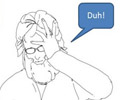The Second World War - Battle Of Britain - World War Two - The Blitz
The Blitz - The Battle of Britain
After the fall of France the Germans turned their attention to invading Britain. The German command had not expected to be faced with this prospect and had not prepared for it. To prevent the Royal Navy attacking their invasion force the Germans had to secure air superiority over the English Channel and south coast of Britain. The air campaign intended to achieve this has become known as 'The Battle of Britain' after Winston Churchill made a speech to the House of Commons on 18th June 1940.
Luftwaffe
The German air force had at its disposal around 3,500 aircraft based at airfields along the coasts of Norway, Denmark, Holland, Belgium and northern France. Around 1,300 of these were bombers, either twin engine medium bombers or single engine Stuka dive bombers. The rest were either short range single engine Messerschmitt bf109 or twin engine Messerschmitt bf110 strategic long range fighters. The limited range of the bf109's was to become a significant factor in the battle because it only gave them a very short time over England to defend their bombers.
Royal Air Force
The RAF had lost a considerable number of aircraft during the Battle of France, around 450 of which were fighters. This loss included a significant number of aircrew and whilst the lost aircraft could easily be replaced, the aircrew couldn't.
At the start of the Battle of Britain the RAF had around 660 fighter aircraft of which 400 were Hurricane's, 200 were Spitfire's. The rest were a mix of Boulton Paul Defiants and Gloster Gladiator biplanes; designs that were totally unsuitable for the type of aerial battles that were to take place in 1940.
Whilst being outnumbered, the RAF had two huge advantages:
- Radar and a well trained Observer Corps meant that the build up and progress of German attacks could be monitored, allowing the RAF to conserve its resources;
- the RAF were operating over home territory, any pilot shot down could return to his squadron to fight again, German pilots were captured and were out of the fight
The Battle
The battle started on 10th July 1940 with attacks on shipping off the south coast of England.
During August, when attacks on shipping failed to draw the RAF into an all out battle, the Luftwaffe expanded its attacks inland to destroy RAF airfields and installations. It was reasoned that the RAF could not afford to let this happen and would commit its entire strength to defend theses precious assets.
The RAF was divided into different organisations. The organisation responsible for the defense of the UK was called Fighter Command, led by Air Chief Marshal Hugh Caswall Tremenheere Dowding. Fighter Command consisted of Groups, each responsible for a portion of the UK. The most important was No. 11 Group, commanded by Air Vice Marshall Keith Park, responsible for defending the South East of England, including London.
Keith Park intentionally avoided committing his fighter squadrons en masse in an all out duel with the Luftwaffe fighters. His prime objective was to reduce the Luftwaffe's bomber fleet whilst preserving his force to resist the expected invasion.
On each raid the Luftwaffe was suffered constant heavy losses. Despite suffering equally, if not more, the RAF continued to mount an effective resistance. It appeared that the RAF was winning, when in fact they were close to loosing.
A lack of accurate information concerning the relative losses of their own squadrons compared to those of the RAF led the Luftwaffe Command to believe that they would loose the battle and looked for different tactics.
On 7th September 1940 the Luftwaffe started to focus on London. The hard pressed RAF was given a much needed respite in which to rest, re-group, re-equip, repair airfields and train new pilots.
The Battle of Britain was near an end and the Blitz was about to start.
